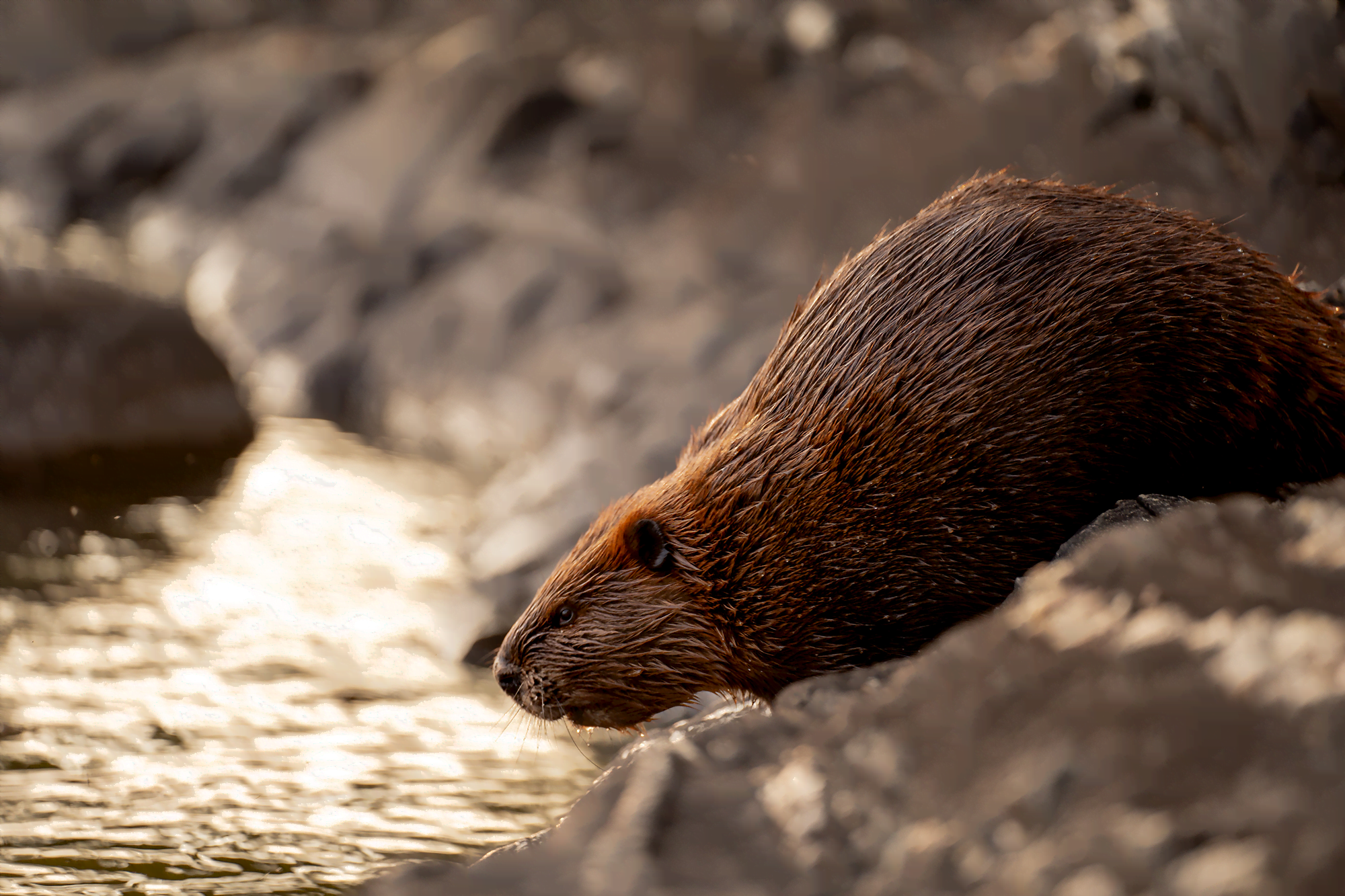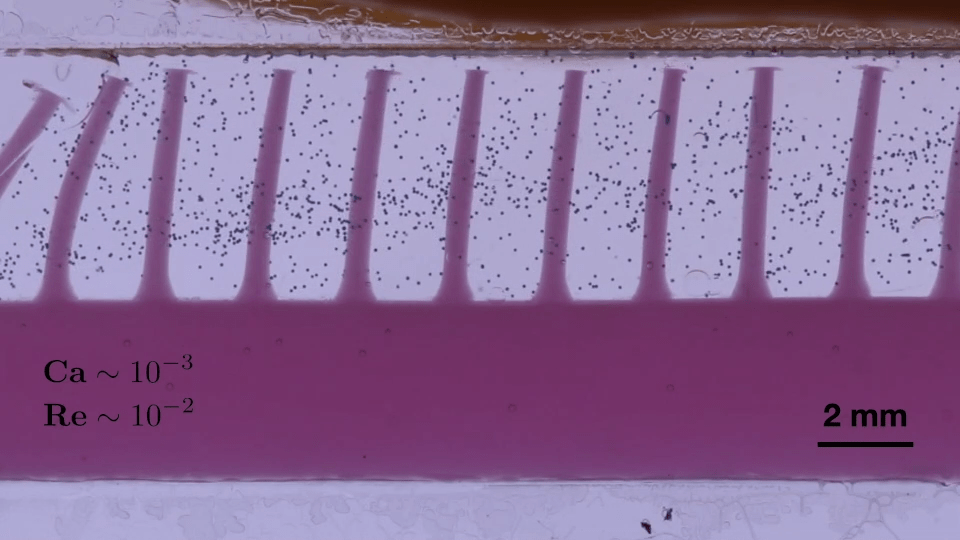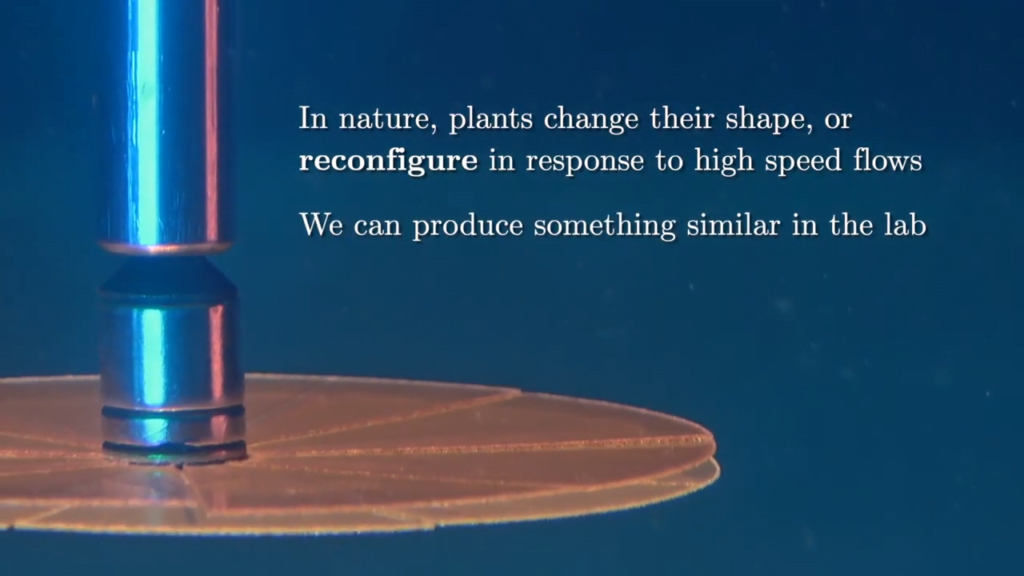Inspired by a muddy hike with a dog, today’s study looks at how fur in a flow can shed dirt and debris. Researchers placed beaver, coyote, and synthetic hairs in a flow chamber with a slurry of titanium dioxide particles in water. After 24 hours, they counted the particles stuck on each hair. The more flexible a hair, the cleaner it stayed. Long hairs collected fewer particles per unit surface area than short ones, thanks to their larger deflection in the flow. The effect, they discovered, is a bit like when paint or glue dries on your hand. The more you move and flex your skin, the harder it is for crusty material to stick. This self-cleaning with flex and flow occurs in nature, too: the only furry mammal with consistently dirty fur is the notoriously inactive sloth. (Image credit: T. Umphreys; research credit: M. Krsmanovic et al.; via APS Physics)
Tag: flexibility

Bending in the Stream
Nature is full of cilia, hairs, and similar flexible structures. Unsurprisingly, flows interact with these structures very differently than with smooth surfaces. Here, researchers investigate flow in a channel lined with flexible, hair-like plates. Initially, the channel is filled with oil and dark particles that help visualize the flow. Then, they pump water into the setup.
As the water intrudes, it forms an interface with the oil. That interface is powerful enough to bend individual hairs in the system. When the hair bends far enough, it can touch its neighbor, sealing the oil inside the gap between them. Along the length of the channel, this behavior leads to trapped pockets of oil that never drain, no matter how much water flows by. (Image and research credit: C. Ushay et al.)

“Reconfiguring It Out”
Leaves flutter and bend in the breeze, changing their shape in response to the flow. Here, researchers investigate this behavior using flexible disks pulled through water. The more flexible the disk and the faster the flow, the more cup-like the disk’s final shape. Adding tracer particles to the water allows them to visualize the flow behind the disk. Every disk leaves a donut-shaped vortex ring spinning in its wake, but the more reconfigured the disk, the narrower the vortex. This, ultimately, reduces drag on the disk. That’s why trees in heavy winds streamline their branches and leaves; that flexibility lowers the drag the tree’s roots have to anchor against. (Image and video credit: M. Baskaran et al.)

Meet BILLY
Many wings in nature are not rigid. Instead they flex and curve with the flow. Here researchers imitate that phenomenon with BILLY (Bio-Inspired Lightweight and Limber wing prototYpe). Using an evolutionary-style algorithm, BILLY determines its own optimal flapping characteristics to maximize performance. Its flexible membrane-style wing actually performs better than a rigid wing! Check out the end of the video for some flow visualization of the leading edge vortex. (Image and video credit: A. Gehrke et al.)

Flexible Wings Aid Butterfly Flight
Butterflies are some of the oddest flyers of the insect world, given the large size of their wings relative to their bodies. That could be a recipe for inefficient flight, but a new study shows that butterflies’ large flexible wings actually help them take off quickly.
When lifting their wings, butterflies use an unusual clapping motion, with the leading edges of their wings coming together before the rest of the wings. This motion helps cup and direct air, creating most of the butterfly’s thrust, according to the researchers. The wings’ flexibility is key to this. Using artificial wings — both stiff and flexible — researchers found that the flexible wings generated 22% more useful impulse and were 28% more efficient. For a tiny flyer with frequent take-offs, that’s an enormous savings! (Image, video, and research credit: L. Johansson and P. Henningsson; via BBC; submitted by Kam-Yung Soh)

The Wanderings of Micro-Scallops
In the 19th century, botanist Robert Brown observed pollen granules beneath his microscope jittering randomly. Einstein showed that this motion resulted from the impacts of much-smaller atoms against the particles. For small enough objects, the random walk of Brownian motion dominates their dynamics. A new study explores how flexible objects move at this Brownian scale.
The researchers used trios of colloids — microscopic particles — held together by a lipid fluid layer that allows the three particles to change shape without losing contact. Essentially, each trio forms a tiny hinge. As atoms strike the colloids, they both move and change shape.
Compared to rigid shapes, the researchers found their flexible hinges moved around in space about 3-15% faster. They also found coupling between the shape changes and motion. When the colloids hinge closed, it propels them in the direction the hinge points. Because this resembles the propulsion of scallops, the researchers refer to this as the “Brownian quasi-scallop mode.” (Image and research credit: R. Verweij et al.; via phys.org)















